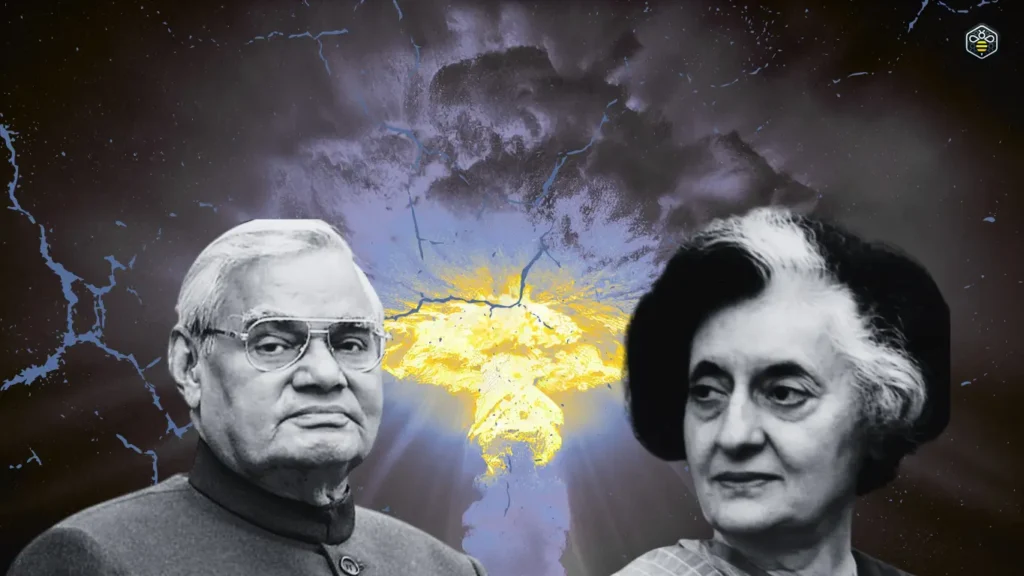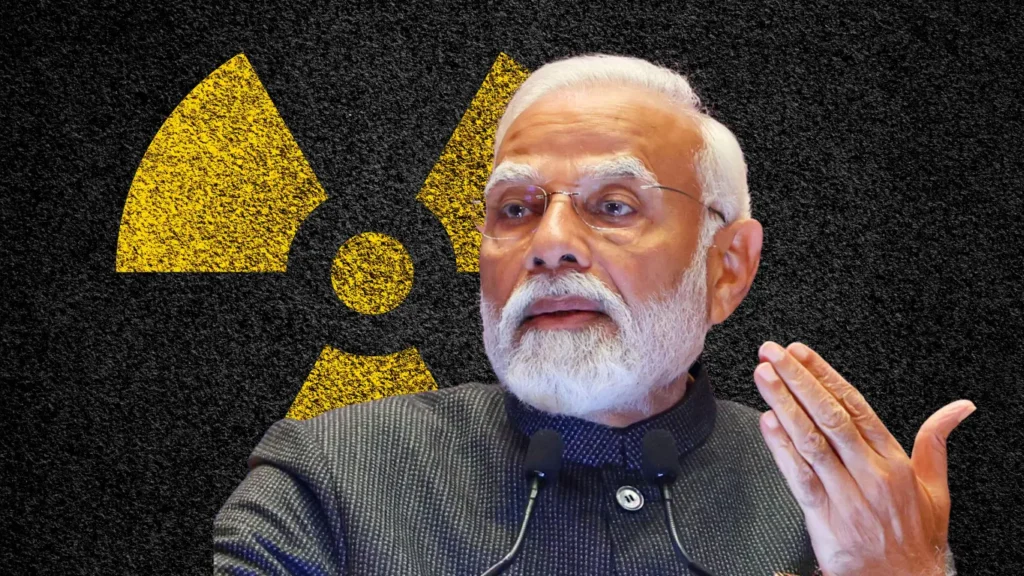
The nuclear bomb test in India marked a pivotal turning point in the nation’s defense strategy. From the first nuclear bomb test in India in 1974 to the decisive tests in 1998, the country’s nuclear program evolved in response to regional threats, technological ambitions, and global politics. This article explores the timeline, scientific efforts, political leadership, and global response to both Pokhran I and II, answering common questions like “when was the first nuclear bomb tested in India?” and “where was nuclear bomb tested in India?”
What Was the First Nuclear Bomb Test in India?
India’s first nuclear test, codenamed Smiling Buddha, was conducted on May 18, 1974. This was the first successful nuclear bomb test in India, marking its entry into the exclusive nuclear club.
The first test of nuclear bomb in India occurred on May 18, 1974, at Pokhran Test Range, Rajasthan.
This first nuclear bomb test in India was described as a peaceful nuclear explosion, but it had undeniable strategic implications.
Pokhran I: Operation Smiling Buddha (1974)
Timeline and Background
- 1962: After the war with China, India intensified nuclear research.
- 1964: China’s nuclear test heightened regional concerns.
- 1972: Prime Minister Indira Gandhi gave the go-ahead for testing.
Test Details
- Date: May 18, 1974
- Location: Pokhran, Rajasthan
- Code Name: Smiling Buddha
- Yield: Estimated 8 kilotons
Scientific Leadership
The test was executed by BARC, under the leadership of Dr. Raja Ramanna and guidance from Dr. Homi Sethna. It involved a close collaboration with the Indian Army.
Source: Department of Atomic Energy
Global Reaction
- Canada suspended nuclear cooperation.
- United States condemned the act.
- Formation of the Nuclear Suppliers Group (NSG) to restrict nuclear trade.
India did not sign the NPT, claiming it was discriminatory and legitimized only existing nuclear powers.
Pokhran II: Declared Nuclear Power (1998)
When Was Nuclear Bomb Tested in India Again?
India resumed testing in May 1998, this time as a definitive military assertion. Codenamed Operation Shakti, this series of tests made India a declared nuclear weapons state.
The nuclear bomb test in India 1998 took place on May 11 and 13 at Pokhran Test Range.
Timeline and Structure
- May 11, 1998: Three nuclear devices tested.
- May 13, 1998: Two additional devices detonated.
- Total Tests: Five
If you’re wondering “how many nuclear bomb test in India?” — the answer is six: one in 1974 and five in 1998.
Political Leadership
- Prime Minister: Atal Bihari Vajpayee
- He announced India as a nuclear weapon state.
Scientific Collaboration
Led by:
- Dr. A.P.J. Abdul Kalam (DRDO)
- Dr. R. Chidambaram (Atomic Energy Commission)
Source: DRDO
Global and Regional Reactions
- Economic sanctions from the US, Japan, and other countries.
- Pakistan responded with its own nuclear tests in Chagai Hills.
Source: India-US Nuclear Deal
India’s Nuclear Doctrine
Following Pokhran II, India adopted a No First Use (NFU) policy.
Key Principles
- Nuclear weapons for deterrence only.
- Massive retaliation if attacked with nuclear weapons.
- Emphasis on strategic autonomy.
India has not signed CTBT and maintains the right to conduct tests if necessary, addressing the query: “is there any 3rd chance of nuclear bomb test in India?”
FAQ.
Where was nuclear bomb tested in India?
At the Pokhran Test Range, located in the Thar Desert of Rajasthan.
How many nuclear bomb in India tested?
India has tested a total of six nuclear bombs — one in 1974 and five in 1998.
Where was the first nuclear bomb tested in India?
The first test was at Pokhran, Rajasthan, in 1974.
How many nuclear bomb test in India?
There were six tests in total across two operations: Pokhran I and Pokhran II.
When was first nuclear bomb tested in India?
May 18, 1974.
When was nuclear bomb tested in India?
On two occasions: May 18, 1974 and May 11 & 13, 1998.
When was the first nuclear bomb tested in India today?
The first test occurred on May 18, 1974; commemorations happen annually on this date.
Did India test a nuclear bomb in 1995?
No, the nuclear bomb test in India 1995 was planned but postponed due to U.S. satellite detection.
Where did India test its nuclear bomb in 1974 and 1998?
Both test series were conducted at the Pokhran Test Range, Rajasthan.
Who tested the first nuclear bomb in India?
It was tested by scientists at BARC, under Dr. Raja Ramanna, with authorization from Prime Minister Indira Gandhi.
Who guided the nuclear bomb test in India in 1998?
Dr. A.P.J. Abdul Kalam and Dr. R. Chidambaram led the tests under Atal Bihari Vajpayee’s government.
Why did India test nuclear bomb in 1998?
Due to increasing threats from China and Pakistan, and to establish a credible nuclear deterrent.
Strategic and Geopolitical Impact
1. Deterrence
India established itself as a nuclear-capable power in South Asia, strengthening its defense.
2. Technological Achievement
Proved indigenous capability in nuclear design and delivery.
3. Global Standing
Despite sanctions, India emerged stronger diplomatically, culminating in the India-US Civil Nuclear Deal.
Key Comparison Table
Attribute | Pokhran I (1974) | Pokhran II (1998) |
Devices Tested | 1 | 5 |
Government in Power | Indira Gandhi (Congress) | Atal Bihari Vajpayee (BJP) |
Declared Objective | Peaceful Nuclear Use | Strategic Deterrence |
Global Reaction | Condemnation | Sanctions, but eventual deals |
Technology Source | Indigenous | Indigenous |
Conclusion
The nuclear bomb test in India was not just a scientific achievement but a strategic necessity shaped by security threats and global power dynamics. From Pokhran I to Pokhran II, the country’s stance on nuclear weapons has evolved into a doctrine of responsibility and deterrence.
India continues to uphold its No First Use policy, while retaining the capability to respond decisively. As geopolitical tensions rise, understanding India’s nuclear journey is vital to grasp the larger picture of South Asian security and global diplomacy.


Pingback: Vice President of India: 7 Key Facts You Should Know - HypeHive